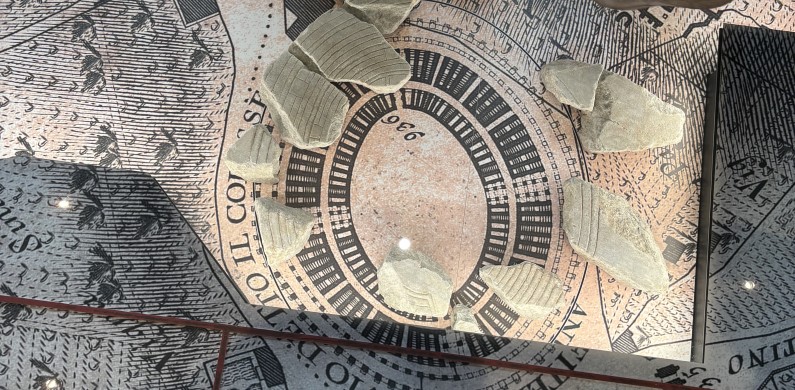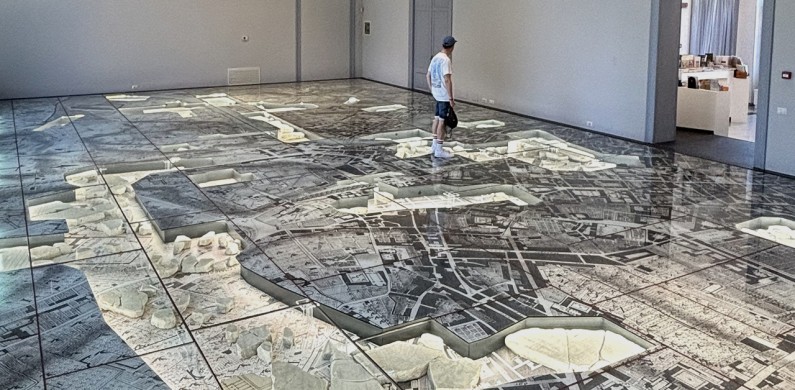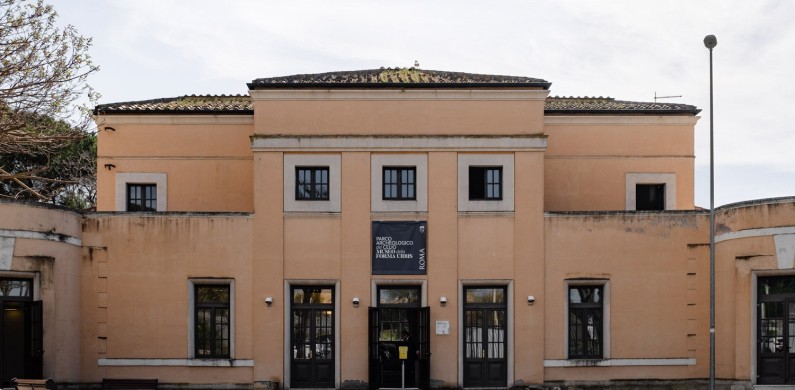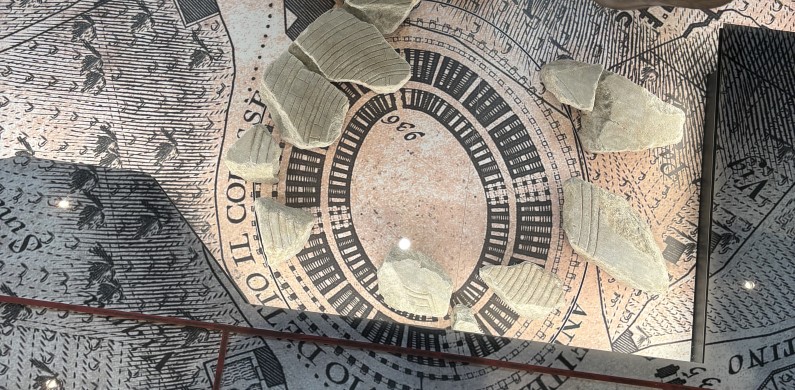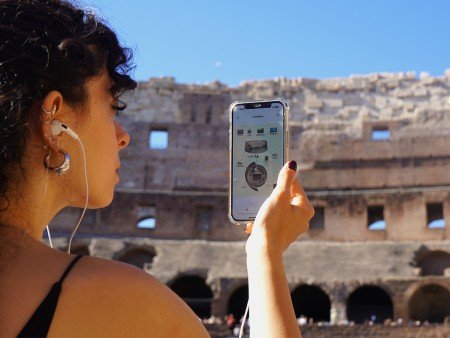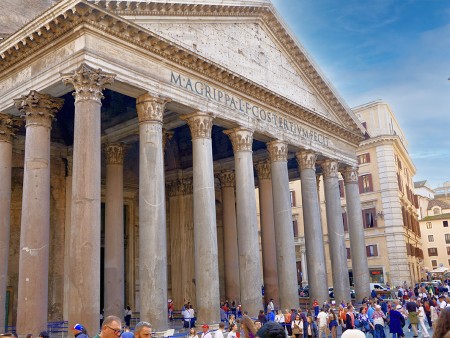Private Forma Urbis Museum Tour on a huge Ancient Rome city map
Walk on the huge map of Imperial Rome: sense history the long-lasting power of emperors’ propaganda with a private guide
Immerse yourself in a timeless journey through a new perspective of Rome's ancient streets with our exclusive tour at the Museo della Forma Urbis, a must-see stop on your trip to the Eternal City.
Admire this ancient marble map of Imperial Rome, the original size of 13 x 18 meters, a unique archaeological treasure commissioned by Emperor Septimius Severus in the third century AD and now placed horizontally, like a kind of floor on which you can walk.
Locate and place yourself on the iconic monuments of ancient Rome guided in the deciphering of the map by an expert historian who will be able to tell you the secrets of these places buried or still visible today.
Discover the secrets hidden behind each stone-fragment of the map, reliving the enchantment of ancient Rome as our expert will reveal to you the propaganda intentions of the emperor who wanted it posted on the wall of a temple in the Roman Forum for all to see, causing them all to be amazed at the grandeur of Rome.
Through to the superimposition of the Forma Urbis with the new topography of the city created in the mid-18th century by Giambattista Nolli and the young Piranesi, you will be able to recognize every neighborhood in Rome and know what your next destination will be!
Experience the thrill of walking among the ruins of the past as you explore the streets and monuments visible in Rome in the 3rd century AD on this private tour that mixes history, art, and communication.
After exploring Rome’s ancient map you can uncover more hidden history with our Castel Sant'Angelo and Villa Farnesina Tour.
In addition to the imperial streets of Rome you can discover all secrets about Ancient Rome continuing your journey in our Colosseum Guided Audio Tour.
Duration
1.5 hours
Private Tour
TOUR INCLUDES
Tickets Forma Urbis Museum
Live expert guide
Main sites Explored in the Tour
Celian Hill
Forma Urbis Museum
Opening hours and Entry Tickets for this tour
2025 - Museum of Forma Urbis Opening Days and Hours
From 1st January to 29th March
Tuesday - Sunday: 10:00 AM - 4:00 PM (Last admission at 3:00 PM)
From 30 March to 26th October
Tuesday - Sunday: 10:00 AM - 7:00 PM (Last admission at 6:00 PM)
From 27th October to 31st December
Tuesday - Sunday: 10:00 AM - 4:00 PM (Last admission at 3:00 PM)
Museum of Forma Urbis Closure Days
- 1 May
- 25 December
Famous people's stories
Septimius Severus: Roman emperor and visionary leader of III century AD, blended military prowess with political cunning. His relentless ambition and his reforms transformed Rome
Giovanni Battista Nolli: Italian engineer and architect of 18th century, its precision and artistic detail in cartography and urban planning influenced future maps and urban development
Explore the historic Colle Celio-Celian Hill where the Forma Urbis Museum offers a unique window into the urban and architectural splendor of ancient Rome. The museum houses the remains of the Forma Urbis, a monumental marble map from the 3rd century AD, once displayed in the Temple of Peace in the Roman Forum. Perched on one of Rome’s famous seven hills, the Celian Hill itself provides a stunning backdrop to this immersive experience, with its layers of history, leafy parks, and ancient ruins. This private walking tour will guide you through both the museum and the ancient surroundings of the Celio, offering a deeper understanding of the grandeur that once was Rome.
A Hidden Gem: The Celian Hill
Begin your private tour of Forma Urbis Museum with a stroll through the peaceful surroundings of the Celian Hill. As one of the lesser-visited of Rome’s seven hills, it offers a serene contrast to the bustling tourist spots. Rich with history, walking through its tree-lined streets and parks, you’ll feel a connection to the past. The Celio was once the residence of wealthy patricians and imperial elites, who built grand homes and gardens here to escape the busy streets of the city center. These aristocratic retreats echo the history of the area as a privileged enclave in ancient Rome.
Your expert guide will get you into the magic of this place with an introduction to the Celian Hill's importance in Roman times—from its early military and religious significance to its evolution into a district of palatial residences. This context sets the stage for the map, as you explore how the Forma Urbis revealed the urban planning of a thriving metropolis.
Discovering the Forma Urbis: Fragments of the Ancient City
Now you are ready to immerse yourself into the Forma Urbis Museum where you are immediately greeted by an overview of the map's significance. Originally commissioned by Emperor Septimius Severus, this colossal marble map of ancient Rome once adorned a massive wall, giving Romans a bird’s-eye view of their city.
Step by step you’ll know better the fragments of the Forma Urbis—pieces of the vast map that once detailed every street, building, and monument in the city. Although much of the map was lost to time, the surviving fragments are rich with intricate details.
Be amazed by famous Roman landmarks fragments, including the Colosseum, the Roman Forum, and even parts of the Celian Hill itself. Here, you’ll find remnants of Roman bathhouses, temples, and villas that once stood in ancietn times, probably worth your next Rome private tour. Marvel at how the ancient urban landscape is brought to life through these stone carvings, showing how Rome was meticulously organized, down to the smallest details.
Rome’s Hidden Layers: the Secrets of the Forma Urbis through a Baroque Map
Discover how the Forma Urbis captures the intricate layout of ancient Rome in the 3rd century AD, mapping out every building, street, and monument with meticulous detail. Meanwhile, Nolli’s map from the 18th century unveils a similar mastery in depicting the city's Baroque streetscape, but with an innovative twist: it also reveals the internal spaces of churches, courtyards, and piazzas, just as the Forma Urbis revealed Rome’s public spaces centuries earlier.
Your private guide will unlock the secrets behind these two extraordinary maps, drawing fascinating connections between them. As you move between the ancient fragments of the Forma Urbis and Nolli's map, you’ll witness how the urban landscape of Rome evolved over time, yet maintained a deep connection to its roots. Both maps serve as invaluable tools for understanding the continuity between ancient and modern Rome—how the streets and monuments of Imperial Rome continued to influence the city’s structure throughout the centuries.
This dialogue between the Forma Urbis and the Nolli's Map invites you to explore the city's history in unprecedented detail, uncovering layers of architecture, culture, and design that continue to shape Rome’s vibrant layout today. The result is a captivating journey through time, as ancient and Baroque visions of the Eternal City merge into one seamless urban masterpiece.
Your private tour of the Museum ends reflecting on how ancient Rome continues to shape the modern city. The Forma Urbis Museum not only unveils the layout of the ancient city but also invites you to appreciate how much of that world still survives beneath and alongside the modern city. Walking through the Celio, with its blend of ancient ruins, Renaissance churches, and modern life, provides the perfect ending to a journey through the heart of Rome’s history.
BOOK YOUR TOUR
From € 155
Likely to sell out
